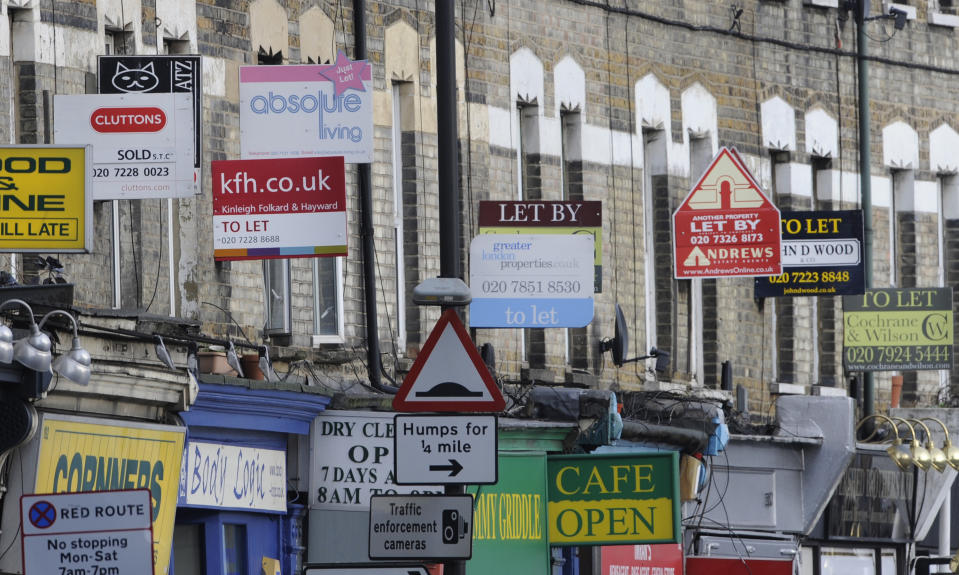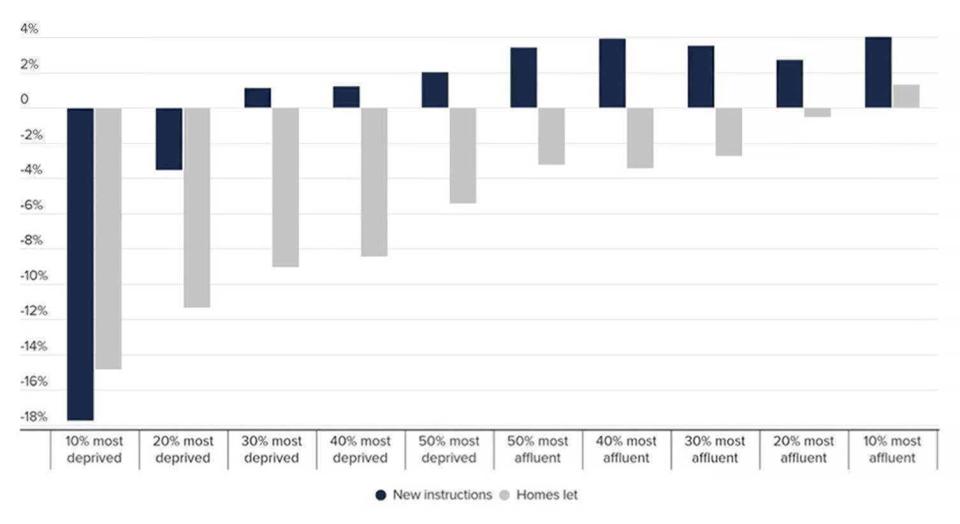Inequality gap widens in UK rental market

New data on the volume of housing lets agreed between May and September, compared with the same period a year ago, has brought the inequality in the UK housing market into sharp relief.
While there was a small increase of 1.3% of homes let in top 10% of affluent areas of Britain, the same measure in the least affluent areas was 14.8% lower, according to research by estate agency group Hamptons International.
Similarly, the number of new instructions coming onto the rental market in the least affluent areas was down 17.7% over the same period.
Meanwhile, the total number of homes let between May and September 2020 fell by 5.3% compared to the same period in 2019.
Nationally, rental growth has flatlined for the sixth month running. Meanwhile, the number of regions recording rent falls since the start of COVID-19 UK lockdowns in March fell to its lowest level.
Rents in London fell for the seventh consecutive month in September, down 2.9%, but the rate slowed compared with August. These falls have been driven by rental trends in inner London. Rents fell 14.1% in September compared to the same time last year.
Other research concurs with this data. An analysis by property site Rightmove (RMV.L) published on Thursday illustrated a continued rush to move to smaller, more rural areas, with lockdowns and working from home fuelling an apparent exodus from smaller homes in busier urban areas.
Rightmove figures show searches have doubled in small towns and villages, compared to only a 53% rise in the 10 biggest cities.
“Back in May when the market reopened in England we wondered how long the desire to move to the country or to smaller towns and villages would last. It’s clear that this short-term shift has turned into a medium term trend," said Tim Bannister, director of property data at Rightmove.
"Some buyers are now more willing to have a country commute a few times a week, and others are preparing for social distancing to be here for quite some time yet, and so are being drawn to places with more outdoor space," he added.
READ MORE: Geneva to introduce world-record £19 hourly minimum wage
“The rental market continued to bounce back in September, yet some of the least affluent areas have seen the rate of recovery move backwards,” said Aneisha Beveridge, head of research at Hamptons International.
“This will weigh down on the market’s revival as a whole, meaning despite strong year-on-year growth in the number of homes let between July and September, it is likely that fewer tenants will move in 2020 than in 2019.”

Despite a stark difference between the top and bottom ends of the affluence spectrum, overall the number of lets agreed is on the up.
From July onwards there have been more lets agreed than at the same time last year. And by September the number of lets in the wealthiest areas of the country was up by in excess of 20% compared with September 2019.
Watch: UK property: What is shared ownership?

 Yahoo Finance
Yahoo Finance 